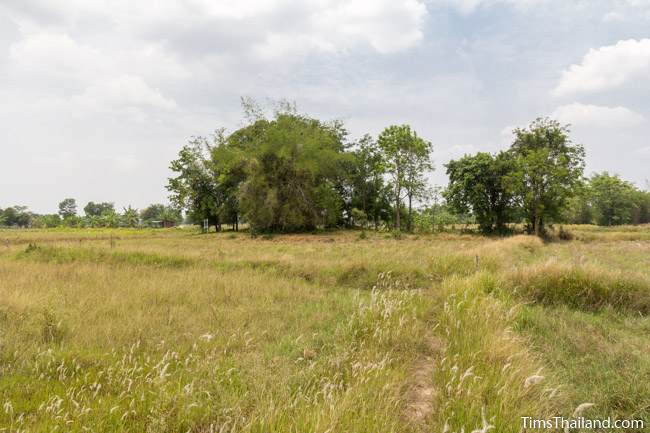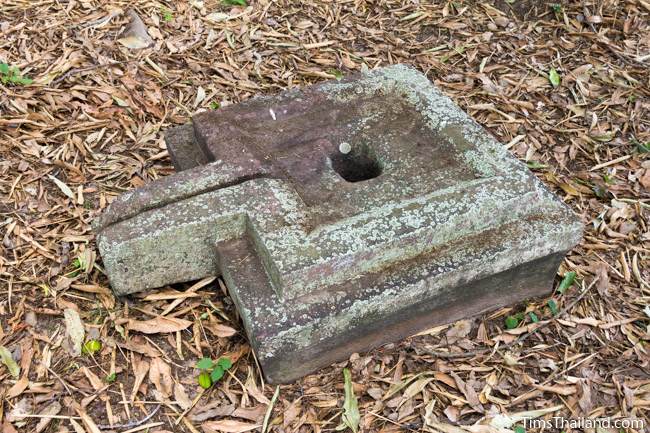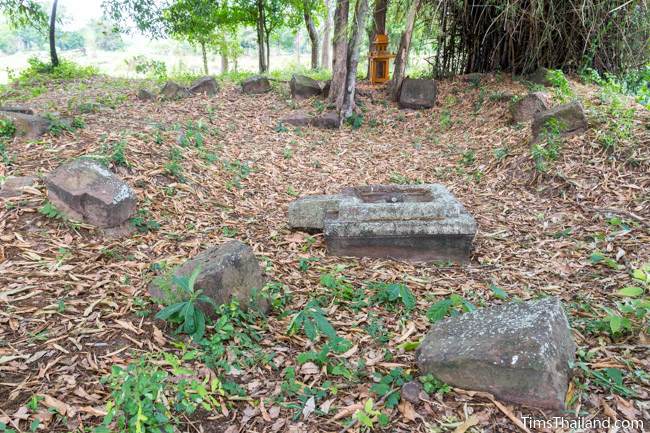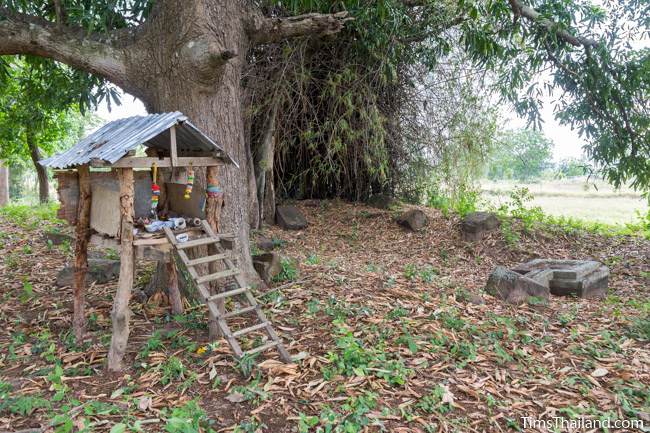Sop Namman (สบน้ำมัน) sits under a giant mango tree far from any village or paved road and it’s the small adventure required to get there, rather than what you find that makes a visit fun.

Judging by the large (1.3 x 1.3 meters square) yoni still there, it could have been a fairly large sanctuary. But, other than this, all that remains are 33 scattered sandstone blocks. Nothing is known of its size, style, or time period except that the use of sandstone blocks for building more than just door and window frames means it was probably constructed before the reign of Jayavarman VII (r. 1182-1219). The faded blue Fine Arts Department sign says there was a horse-shoe shaped moat around it, open to the east, but this is no longer apparent.



To reach it, you leave the paved road behind and turn west at two sugar palm trees. From this small dirt road you can see the sign about 200 meters away through the rice paddies at a small grove of trees.
The name means something along the lines of “a place to store oil” and was given by locals because their ancestors used to store, and perhaps process, oil (presumably coconut oil) here.
Location – Tambon Ban Tan, Amphoe Bamnet Narong, Chaiyaphum Province